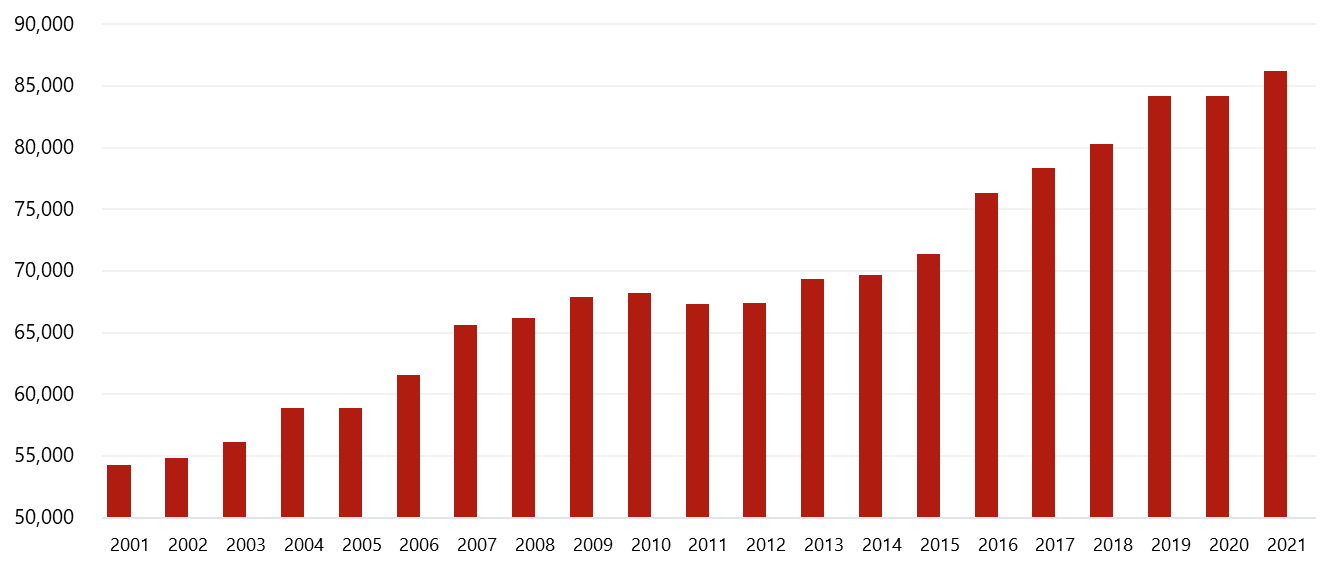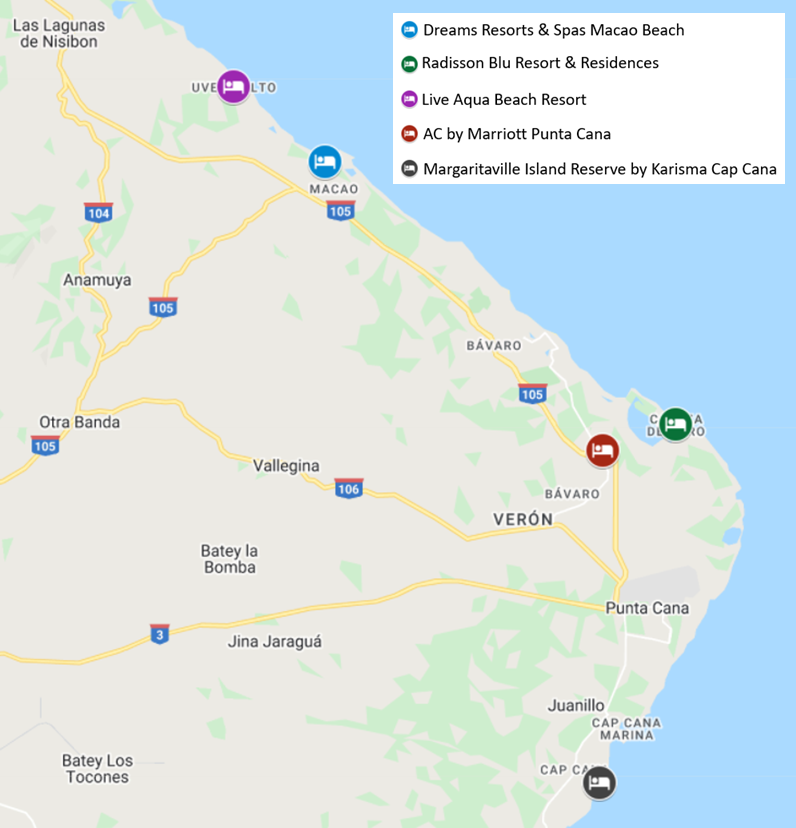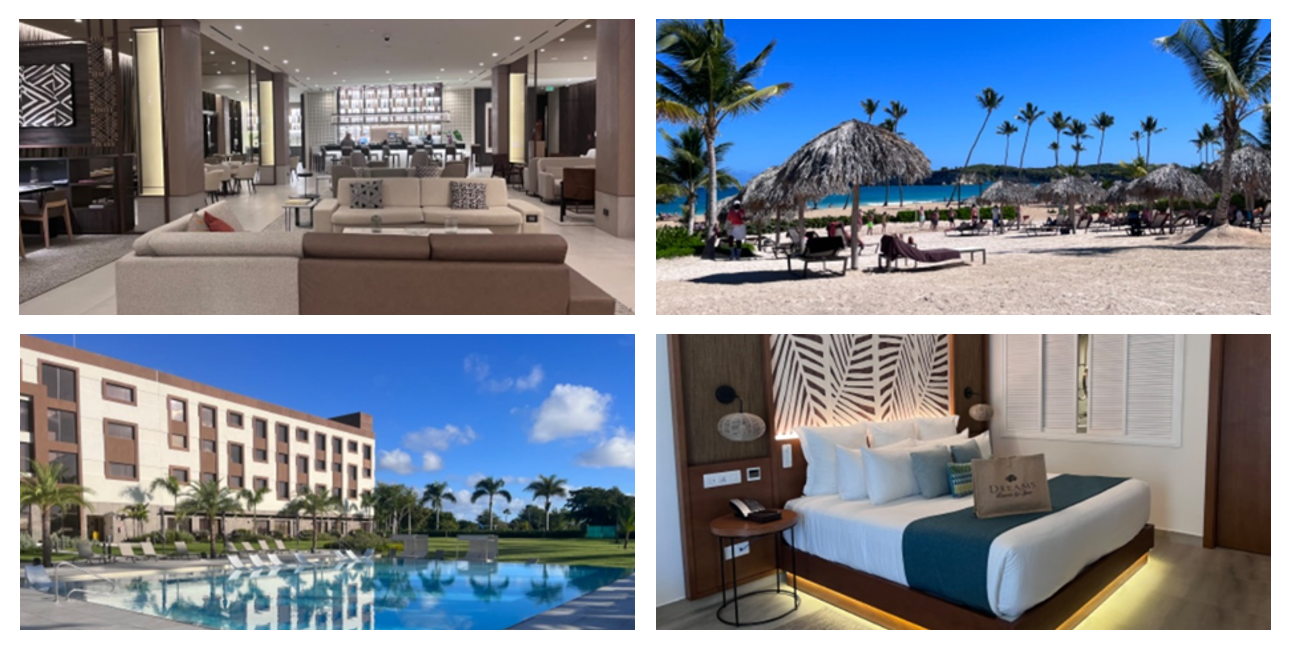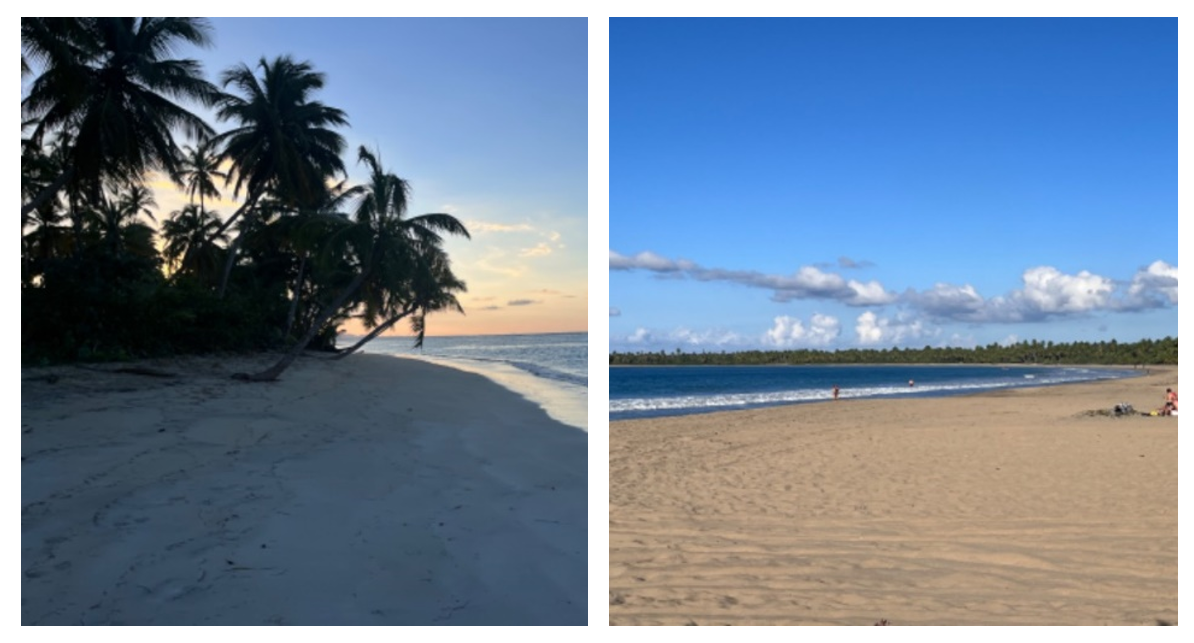By Kristina M. D’Amico
Historical Demand to the Dominican Republic
The Dominican Republic is one of the fastest growing economies in the Caribbean and the most popular tourist destination in the Caribbean region. Its tropical climate, white-sand beaches, diverse mountainous landscape, and colonial history attracts visitors from around the world. The country has 28 provinces spread across six main regions, with the East & Southeast region, which encompasses the cities of Punta Cana and Bávaro, serving as the most popular tourist destination and offering nearly 50% of all hotel rooms in the country.
Over the last 20 years, the Dominican Republic has performed extremely well in terms of occupancy, with historical levels above 70%, other than in the period after September 11, 2001, in the period after the Great Recession in 2009, and during the COVID-19 pandemic.
Occupancy History for the Dominican Republic
Source: Dominican Republic Central Bank, ASONAHORES, Ministerio de Turismo
The Dominican Republic closed its borders to international tourist arrivals on March 19, 2020, reopening on July 1, 2020. However, given the multitude of resort options and evolving entry protocols to aid in the rebound of tourism, the country had a strong recovery from the downturn caused by COVID-19. By the end of 2021, the number of stopover arrivals had increased 126% over 2020, reaching 63% of the stopovers that were recorded in 2019.[1]
The success in visitation to the Dominican Republic is partly attributed to the proactive tourism efforts by the country, including the investment by the Ministry of Tourism in promoting the destination. In addition, the government of the Dominican Republic provides a variety of incentives for new development, which has greatly aided in the increase of room supply over the last 20 years; total available hotel rooms have nearly doubled during that period. Given this growth, the government continues to improve the infrastructure of the country with improvement or construction of roads and airports, ultimately providing better access to many parts of the country and enhancing tourism potential.
Room Supply History for the Dominican Republic
Source: Dominican Republic Central Bank, ASONAHORES, Ministerio de Turismo
Resort Development
Spread throughout the six main regions, the Dominican Republic offers a mix of lodging options, from small boutique properties to large full-service hotels in Santo Domingo to all-inclusive resorts along the coastline. As illustrated previously, room supply increased nearly 30% in the last decade. Over the last few years, the Punta Cana/Bávaro area has shown the biggest increase in room supply given the development of many large all-inclusive resorts.
Some of the recently opened projects in the Punta Cana region are shown on the following map.
Source: HVS Research, STR
In addition to the recently opened projects in the Punta Cana region, our research indicates that approximately 6,000 hotel rooms are in various stages of development across the island. The Dominican Republic continues to lead the Caribbean region with the most rooms under development given its accessibility with seven international airports.
Miches: The Newest Development Region
Miches, also referred to by its location on Playa Esmeralda, is located approximately 75 minutes by car from the Punta Cana area in an emerging resort destination. Located in El Seibo, north of the Eastern Mountain Range and southeast of the Samaná Bay, Miches offers a mixture of mountain and beach landscapes. The Five-Trident Club Med Playa Esmeralda Resort, which opened in 2019, was the first and remains the only resort in the area.
The El Seibo Hotel and Tourism Association, established in 2020 and formally known as ProMiches, is involved in all proposed projects on Playa Esmeralda. In early 2021, meetings between the government and ProMiches began in which ProMiches asked for support for the development of this area. This discussion culminated in a visit to the area by government officials, including President Luis Rodolfo Abinader Corona, on February 24, 2021, when an agreement was signed between ProMiches and the government for a collaboration to assist with development needs in the area, including infrastructure, security, and promotion efforts. Given this collaboration, over 3,000 total hotel rooms are in various stages of development.
Conclusion
The active role of the government has been a decisive factor in the growth of tourism in the Dominican Republic and is expected to play a key role in future tourism development. As visitation continues to rebound from the COVID-19 downturn and surpass records given the significant increases in airlift, the Dominican Republic is well positioned for continued development of new hotels and resorts.
To learn more about the Caribbean hotel industry, as well as investment and development in the Dominican Republic and throughout the Caribbean region, join us November 9–11, 2022, for the 11th edition of CHICOS: The Caribbean Hotel Investment Conference & Operations Summit, which will be held at the Hilton La Romana.


